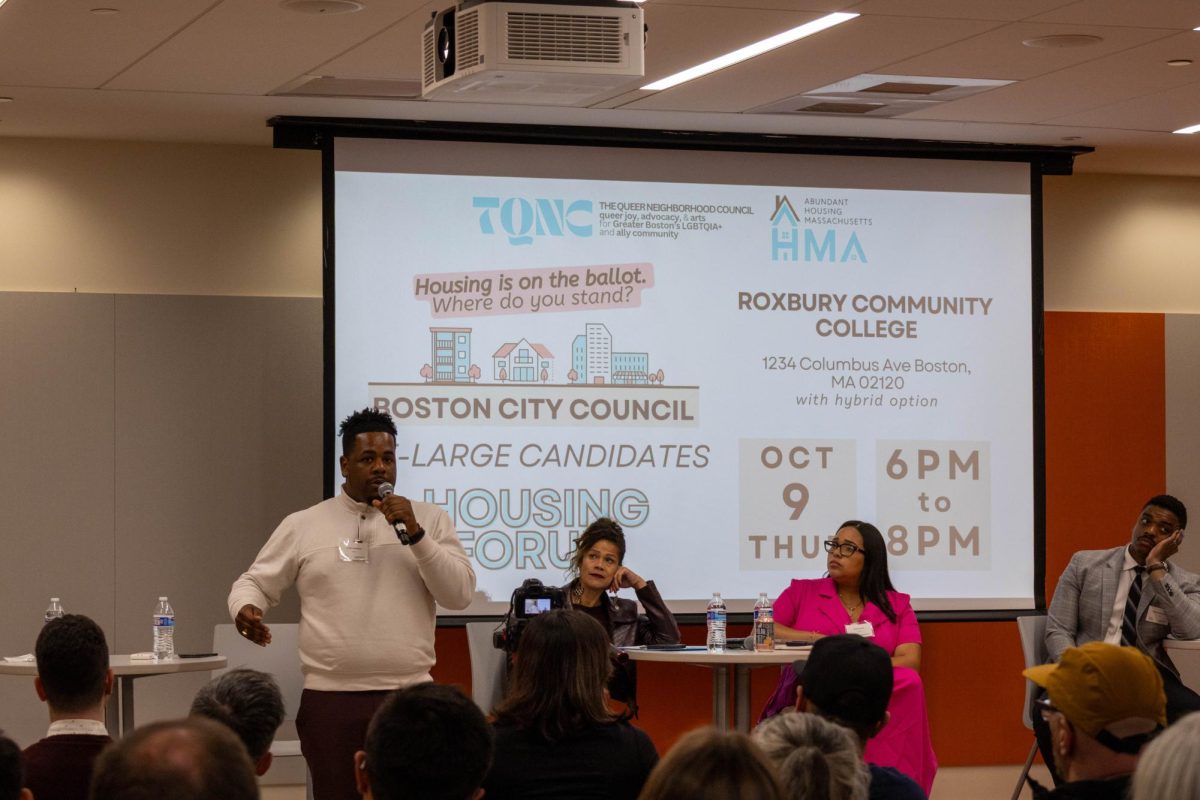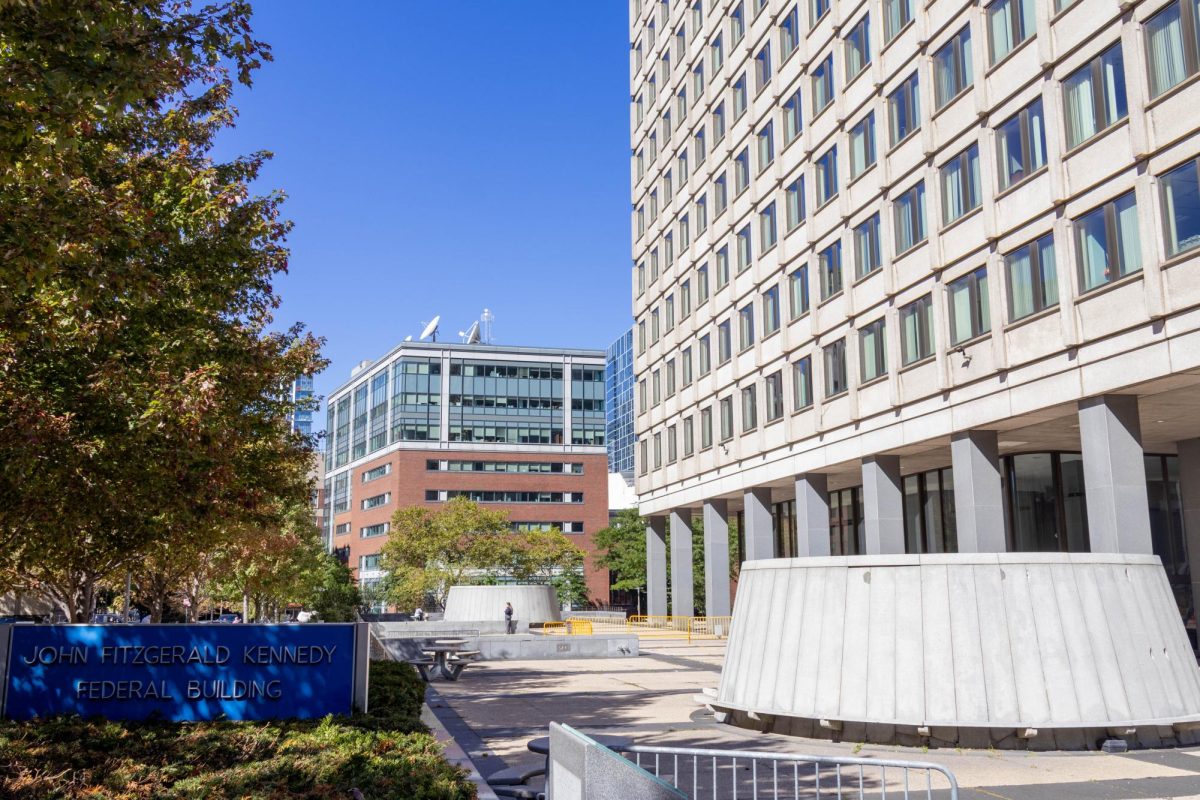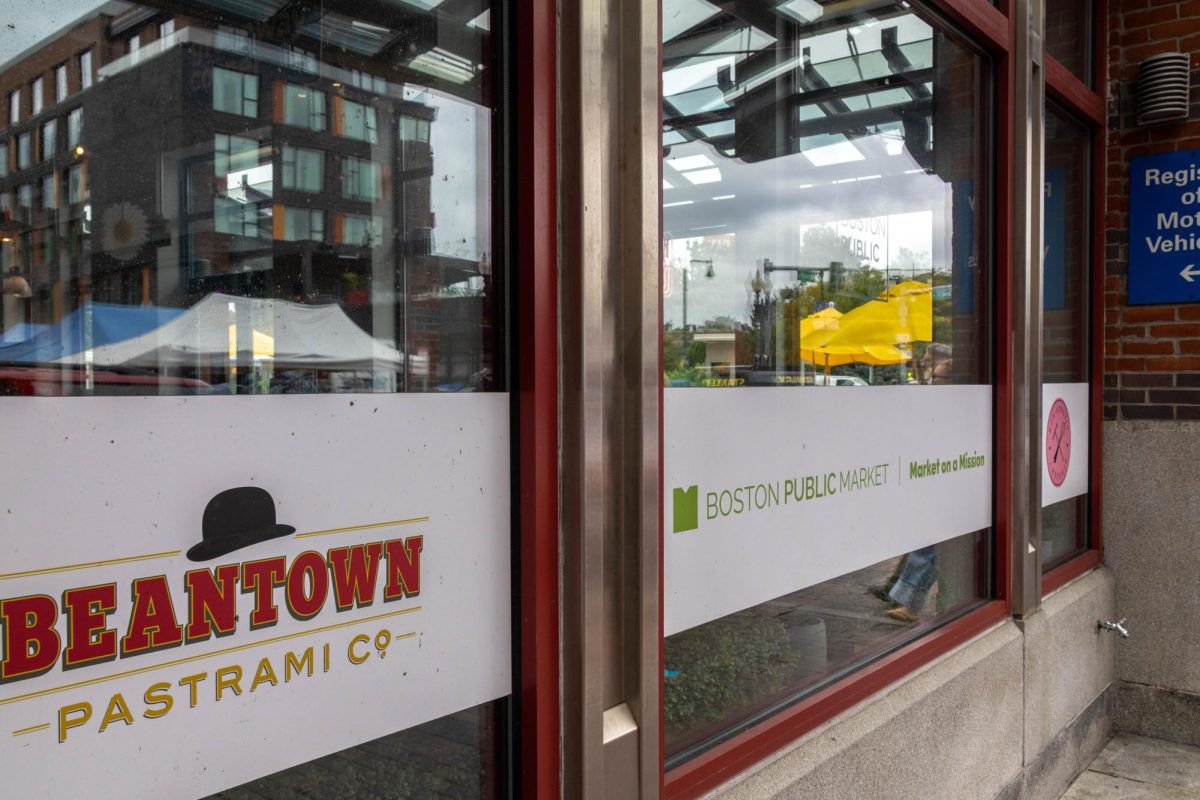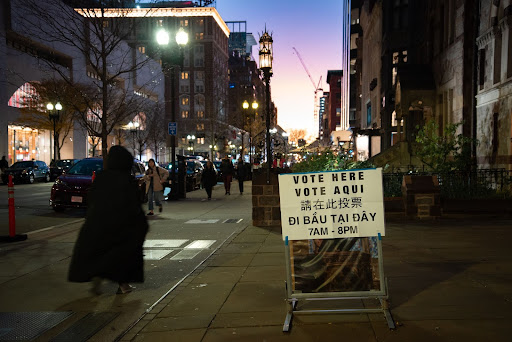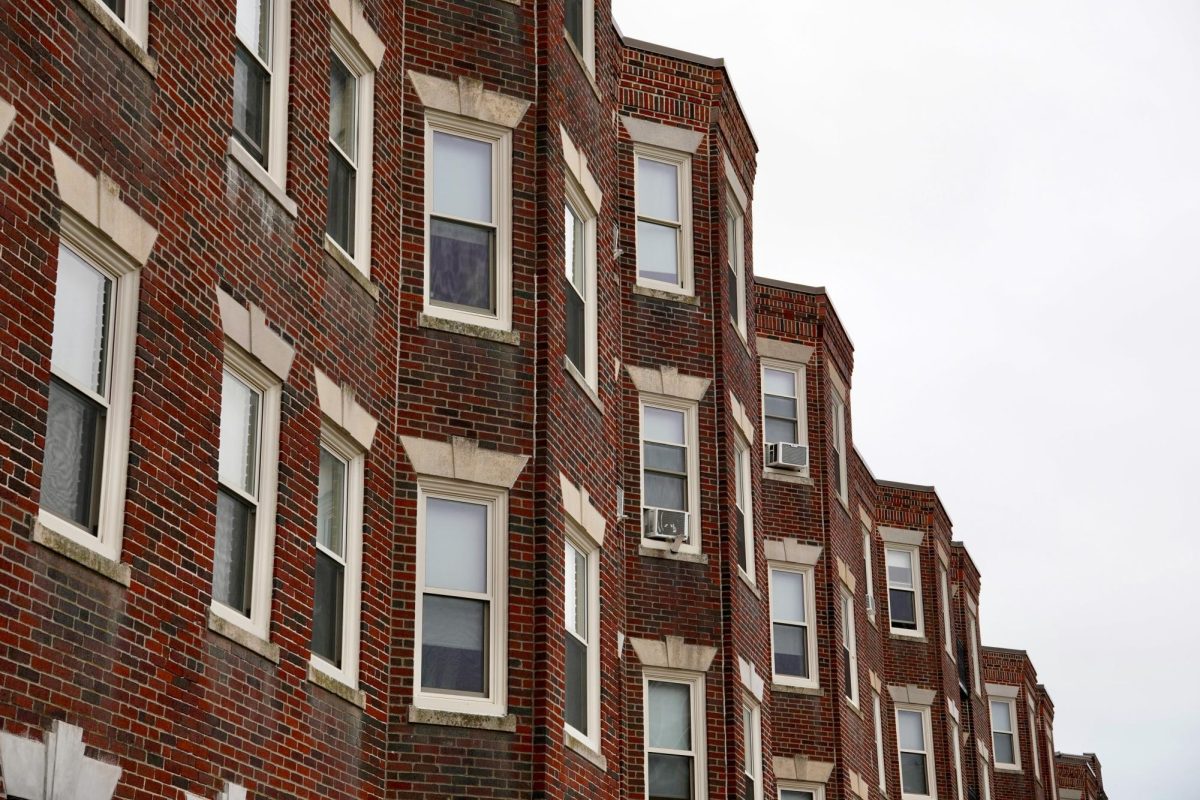Roslindale is the first Boston neighborhood to get new zoning approved by the Boston Zoning Commission after moving through the City’s Squares + Streets process. The updates will allow for the construction of buildings over 10 stories in select areas around the Roslindale Village commuter rail stop. Approved on May 21, it is the first time the neighborhood’s zoning has been updated since 2008.
Mayor Michelle Wu announced Squares + Streets at her 2024 State of the City in a speech that also formally established Boston’s Planning Department as part of what she called an effort in “restoring planning as a core function of City government.”
Squares + Streets aims to take bite-sized pieces of a neighborhood as a way to quickly modernize outdated zoning in areas surrounding public transit. It’s less sweeping than the reforms passed by Cambridge in February 2025, which legalized four-story multi family homes citywide, but both are attempts to remove restrictions on development.
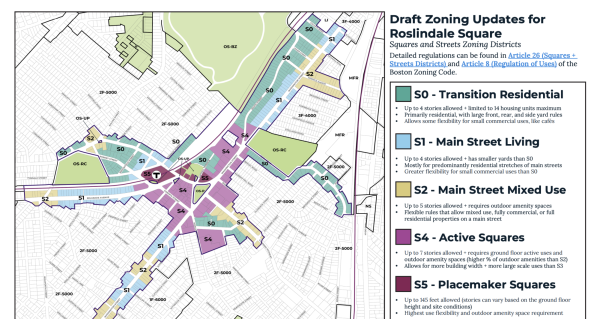
Depending on who you ask, the Roslindale Squares + Streets plan is either a much-needed update or a hastily-implemented threat to the neighborhood’s suburban feel. With its first open house meeting on Feb. 24, 2024 and approval by the zoning commission on May 21, it passed through rezoning in just over a year—something critics have pointed to as evidence that the process wasn’t thorough enough.
Voices from the neighborhood
Rachele Rosi-Kessel on zoning and homeowner property rights
Recent zoning reforms in the United States have sought to loosen restrictions in residential neighborhoods so that developers can build more and build up. In Cambridge, the 2025 zoning update eliminated single-family zoning throughout the city.
But Boston’s Squares + Streets plan takes a more targeted approach, focusing instead on lifting zoning restrictions on a specific and small piece of the neighborhood’s map to encourage more height and allow for more mixed-use and commercial ventures.
Roslindale resident Rachele Rosi-Kessel, 55, believes Squares + Streets would enhance property rights for homeowners, removing restrictions that previously kept her household from making changes on their own property.
Rosi-Kessel has lived in Roslindale since 2004. She’s a stay-at-home parent who’s active in community volunteer efforts and a founding member of the Boston Food Forest Coalition. Her husband is a practicing attorney. When she moved to Roslindale to a home near the Taft Hill parking lot, hers was the only single-family house on her street, which is in a multi-family zone. That street is now a sea of condominiums.
Since she’s lived on her street, Rosi-Kessel’s family has seen three houses go down and condos go up to replace them.
“My husband and I have been very supportive of the changes,” she said, yet “it’s been challenging because we like having views. We like having trees and grass.”
But while watching condominiums go up in her neighborhood, she says individual homeowners are still blocked from renovations that allow them to expand or change the way they use their properties. And she hopes that the new zoning will alleviate that.
“We’ve had so much trouble renovating,” Rosi-Kessel said, “because they’re like, ‘Well, you’re a single family, and you’ve got a big yard. You can’t just build an addition that takes up 10 feet without a variance.’”
Elizabeth Swanson: Boston “wants to be a European city”
For local business owner Elizabeth Swanson, 51, she felt the new zoning plan was rushed into existence. Swanson is the owner of Birch Street House & Garden, a store in the heart of Roslindale Village that sells curated home and garden goods.
Swanson thinks there’s a fundamental disconnect between the new zoning and what’s possible in the area. Boston “wants to be a European city,” she said, but “we don’t have the infrastructure for that.”
Swanson rents in a two-family home with her husband, and her landlord lives in the other unit.
Though she lives outside of the area zoned for Squares + Streets, she’ll be affected by the new plan in her role as a business owner.
The new zoning will allow for more housing in a small part of Roslindale Square, but Swanson described her store’s clientele as “40s up through retirement” and said that most of her customers drive in and don’t necessarily come from that area.
To that end, the plan continues “to take away parking spaces,” she said, which “really makes it hard for businesses.”
Yet the city has made efforts to limit the Squares + Streets zoning’s effects on parking availability. According to Brittany Comak, a spokesperson from the City of Boston’s Planning Department, the first draft of Squares + Streets initially recommended redeveloping the city-owned Taft Hill Parking Lot for affordable housing through their disposition process, in addition to maintaining the property’s current use. But after receiving concerns from local businesses, the city decided to maintain the entire lot as parking.
“We heard clearly from stakeholders, particularly small business stakeholders, that the continued operation of the Taft Hill Parking Lot, as is, is an important shared resource to support the vitality of Roslindale Square,” she said.
Still, Swanson felt the zoning process went too quickly. The first round of public comment ended Jan. 31, but after the holiday rush, she said she wasn’t able to spend as much time looking at the plan as she wanted to.
Swanson doesn’t necessarily think that increased density will lead to better business, at least for her store. Since the square has gotten more dense in recent years, she said her retail revenue has actually gone down.
Ultimately, Swanson still thinks downtown buildings should be kept to three stories or under in Roslindale Village.
“Leaving the buildings right around the square three stories high seems nicer,” she said.
Other critics of the new Roslindale zoning process feel that community feedback didn’t come from a sufficiently diverse pool of residents. Laurie Radwin, who coordinates a group called the Roslindale Coalition, criticized the community outreach efforts (notes from a March meeting summarized here) of the planning department, saying it didn’t reach Roslindale’s BIPOC communities.
As Radwin said in the Jamaica Plain Gazette, “unless you reach the people you’re aiming to reach and measure that and adjust your processes, you’re not going to get the outcome you desire.”
Throughout the process, Swanson went to several community meetings, both in-person and online. But it “was all the same people over and over again,” she said. “So no new people giving feedback or their opinions.” She described that group as “retired, tending toward activists.”
Still, Swanson acknowledged that “getting in front of people is really hard when you’re talking about the public,” and she wasn’t sure what she’d recommend in future Squares + Streets neighborhoods. But she did fondly remember a Congregational Church event in which the church’s social justice committee shared information on the zoning process with the group, and felt that it reached a different audience.
Ben Bruno: “If we were looking to do that today,
forget about it”
Ben Bruno, 42, went to Northeastern University for college and lived in Jamaica Plain for years, but couldn’t afford to buy a home there. So in 2016, he teamed up with his wife, his brother and his sister-in-law to buy a two-family home in Roslindale.
Now, he’s advocating for more affordable housing and walkable neighborhoods with WalkUP Roslindale, a volunteer-run group advocating for greater walkability in Roslindale.
The group rallied hard to get residents to participate in public comment for the plan, which ended on Apr. 5.
While largely supportive of the new Squares + Streets zoning, WalkUP has also argued to extend some sections of the map. After all, Bruno said, Roslindale’s public transit “should benefit a lot more people than it currently does.”
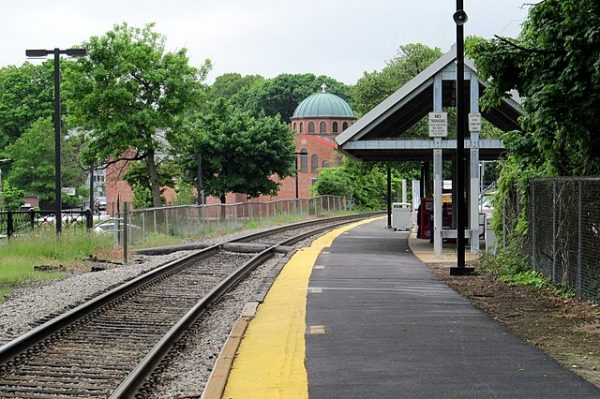
Bruno lives right off Washington St. between Forest Hills and Roslindale Square. Since buying his home in 2016, he says it’s gotten more difficult to buy a home in Roslindale.
“We’re very lucky that we were able to do that then,” he said. “If we were looking to do that today, forget about it.”
Bruno wants Roslindale to be a place where buying a home is possible again. Although he sees the new zoning as a step in the right direction, he still feels the plan is “not aggressive enough.”
In Bruno’s opinion, the Squares + Streets zone should be wider; specifically, he said, Cummins Highway should be zoned S0 or S1 all the way to Hyde Park Ave, which would allow for more multi-family units. .
But overall he wants to see far more of the neighborhood have more flexible zoning.
“I wish we would also see something similar to Cambridge,” he said.
Looking forward
Rezoning is a way to loosen restrictions on property development, but doesn’t guarantee immediate change. New construction for multi-family can take years.
“We’ll see what even really happens here,” Bruno said, “given the nature of tariffs, Canadian lumber, whatever. It’s going to be harder to build. It’s going to be harder to pencil projects in general.”
Ultimately, Bruno emphasized, there’s been a housing crisis for some time, and displacement is already happening.
“Action is required,” he said. “The status quo is just allowing things to become worse and worse.”
Correction: A prior version of this article incorrectly stated that updated zoning in Cambridge banned new construction of single-family homes.



